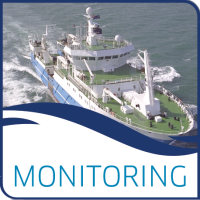The Girnock Burn is an intensively monitored sub-catchment of the Aberdeenshire River Dee in north-east Scotland covering an area of ca. 31km2. The Scottish Government Marine Directorate, Freshwater Fisheries Laboratory (and its predecessors) have monitored the catchment to assess the status and population dynamics of Atlantic salmon since 1966.
Girnock Burn Littlemill is a long-term river temperature monitoring site in the catchment. Analyses, of temporal trends in river temperatures and the effects of logger biases are reported in Jackson et al., (2025). The datasets provided here are bias corrected daily maximum, mean and minimum river temperature, derived from automatically logged monitoring data. Prior to 2010 the data have been corrected for generic equipment biases (but not additional biases from individual units). More recent data (post 2010) are calibrated and corrected individual instrument biases.
These data also underpin the following publication: FL Jackson, RJ Fryer, D Stirling, IA Malcolm (2025) The Influence of Equipment Bias on Reported Temperature Trends: Implications for River Temperature Monitoring Networks. River Research and Applications.
Data and Resources
- Girnock Burn Littlemill River Temperature Monitoring Site Time series 1988-2024csv
Column Description
Preview Download
Date Date
Year Year
DoY Date of...
| Field | Value |
|---|---|
| Publisher | |
| Modified | 2025-07-01 |
| Release Date | 2025-07-01 |
| Identifier | 7dd6604b-0913-4f32-bfb6-7c72af769082 |
| Temporal Coverage | 1988-01-01 to 2023-11-21 |
| Language | English (United Kingdom) |
| License | UK Open Government Licence (OGL) |
| Data Dictionary | Data are collected at the Girnock Burn Littlemill River Temperature Monitoring Site (Eastings 332600, Northing 795700), which is the longest detailed (sub-daily) river temperature record in Scotland, beginning in 1968. Data were initially collected using a mechanical paper-based Cambridge Instruments thermograph. A digital datalogger was first deployed in 1984 and a variety of dataloggers have since been deployed at the site. This dataset extends from 1 January 1988 to 21 November 2023 and contains minimal data breaks (e.g. where equipment malfunctioned so data were unavailable). The time series contains temperature measurements made by different combinations of datalogger makes and models. Earlier data (<1988) were removed due to a lack of suitable metadata (equipment type, site locations or sampling methods) or equipment from which to determine instrument bias. Depending on the datalogger make and model, measurements were taken at 15 minute or hourly intervals. Data are stored in the Marine Directorate FLEObs database, alongside calibration information for more recent years (post 2010). Bias correction for earlier years (pre-2010) was undertaken through calibration experiments that accounted for systematic rounding errors associated with particular makes and models of instrument, but not for any additional biases associated with individual units (Jackson et al., 2025). The summary metrics published here (daily maximum, mean and minimum river temperature) are derived from the corrected raw resolution (i.e. 15 minutes or 1 hour) timeseries of 1 January 1988 to 21 November 2023. |
| Contact Name | Scottish Government, Marine Directorate |
| Contact Email | |
| Public Access Level | Public |


